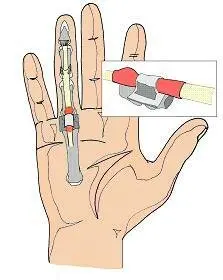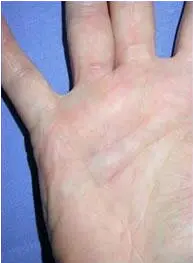اصبع الاصبع
What it is:
it is also defined as flexor tendon synovitis. It is an inflammation of the flexor tendons of one or more digits, which it may appear as a nodule at the base of the involved finger. This condition brings to the typical snapping of the finger during extension movements due to the difficulty of the tendon to pass through the pulley. Snapping is often followed by pain and difficulty in movements.
Causes for this condition are not always clear. Some trigger fingers are associated with medical conditions such as rheumatoid arthritis, gout, and diabetes, other with local trauma to the palm of the finger. Other causes can be related to an excessive use of the flexor tendons, particular repetitive stress movements of the digits.
Treatment :
conservative treatment, consisting in wearing a night split and steroid injection is not always successful. In case of persistence of symptoms the surgical opening of the pulley may be needed. This is performed under local anaesthesia. In selected cases it is possible to perform this procedure endoscopically (Fig.2), through two small incisions, without suture, at the base of the digit. Movement of the hand is allowed right after surgery. Few sessions of hand therapy are useful to teach patients how to behave after surgery.

 Fig. 2 (Treatment)
Fig. 2 (Treatment) 
